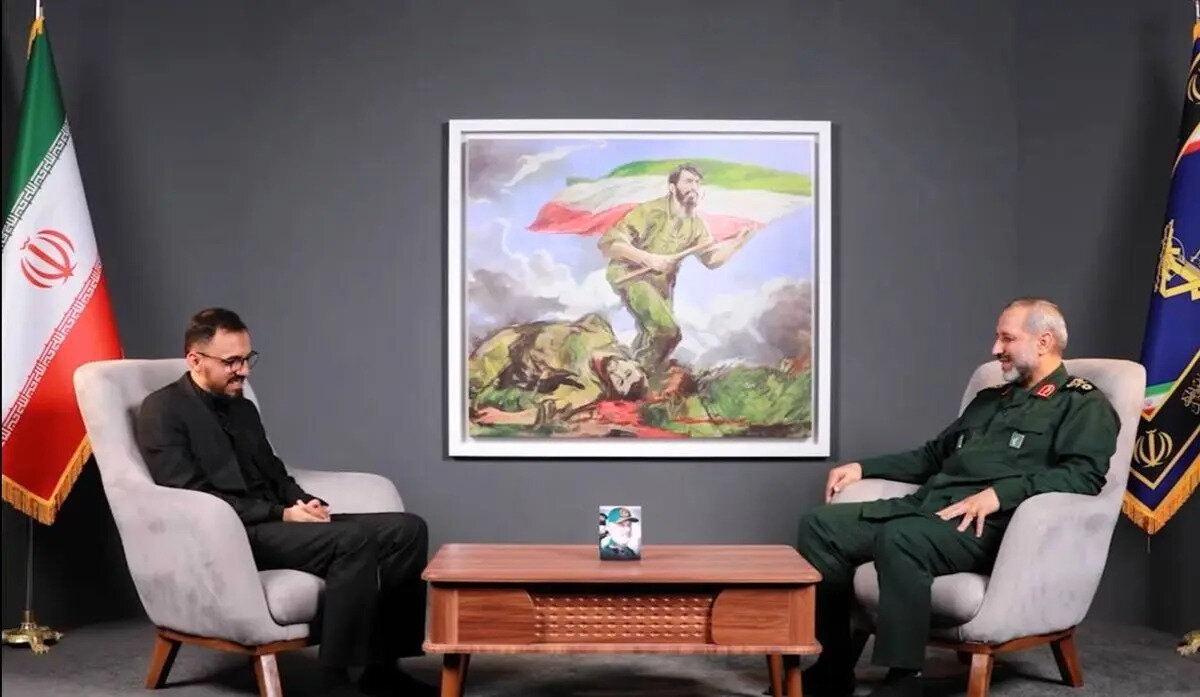‘We must prepare for any situation:’ New IRGC Aerospace chief vows unbroken readiness

TEHRAN – Brigadier General Majid Mousavi, the newly appointed Commander of the Islamic Revolution Guard Corps (IRGC) Aerospace Force, declared Iran’s armed forces "must prepare ourselves for any situation" in his inaugural televised interview.
The statement, delivered against the backdrop of heightened regional tensions, underscores Tehran’s posture of comprehensive readiness following the U.S.-Israeli 12-day aggression against Iran in June that caused the martyrdom of over 1062 Iranians.
"The most important task is the correct understanding of our responsibility in this arena," Mousavi emphasized in the interview that aired Tuesday night, describing perpetual preparedness as a sacred duty inherited from martyred commanders.
His appointment by the Leader of the Islamic Revolution, Ayatollah Seyyed Ali Khamenei, came within hours of the June 13 Israeli strikes that martyred his brothers-in-arms in the Aerospace Force, Generals Amir-Ali Hajizadeh and Mahmood Bagheri, alongside IRGC Chief General Hossein Salami and Armed Forces Chief of Staff General Mohammad Bagheri.
Mousavi, Hajizadeh’s longtime deputy and a key architect of Iran’s missile program, now leads the force at a pivotal moment.
Invoking the spiritual mantle of Iran’s missile pioneers, Mousavi honored martyred General Hassan Tehrani-Moghaddam – father of Iran’s missile program – stating, "We are the 'missile children' who proudly continue his path."
He attributed Iran’s strategic readiness to the "culture of courage and perseverance left by Generals Hajizadeh and [Mahmood] Bagheri," whose sacrifices during the 12-Day War galvanized the nation.
"Today, our country stands firm by relying on the path of magnanimous martyrs. Those who remain carry a great mission," he asserted.
In a subsequent segment of the interview, General Mousavi described Iran’s resilience as "an ever-repeating Ashura," warning the struggle could "recur at any moment."
He praised the millions who flooded Tehran’s streets during the martyrs’ funerals, calling the public "the backbone of this path."
Mousavi concluded with a vow to uphold Iran’s deterrence doctrine: "Until blood flows in our veins, we will continue guarding the Islamic Revolution."
He linked operational readiness to spiritual destiny, urging personnel to emulate martyrs who "lived and fought" for the ultimate goal: delivering "this flag to its true owner, Imam Mahdi (AJ)."
True Promise III: A manifestation of preparedness
Mousavi’s call for preparedness reflects critical lessons from Operation True Promise III, Iran’s unprecedented 22-wave retaliation.
This meticulously planned operation showcased Iran’s capacity for complex, sustained strikes.
Despite the Israeli regime’s sweeping and unprecedented military censorship aimed at concealing the devastating impact, numerous military analysts affirmed the operation delivered crippling blows, severely degrading the regime’s offensive capabilities.
U.S. President Donald Trump publicly acknowledged the effectiveness, stating, "Israel got hit really hard."
Iranian drones and advanced missiles, including hypersonic Fattah and multi-warhead Kheibar, consistently penetrated Israeli air defenses. Key targets included:
- Air bases: Nevatim and Ovda air bases were reportedly rendered inoperable for over 72 hours.
- Military and intelligence hubs: Tel Nof, Ministry of War facilities, and the Kirya complex (Israel's "Pentagon") in Tel Aviv suffered heavy damage, confirmed by Fox News as a direct missile strike despite official suppression. Satellite radar analysis by Oregon State University researchers identified "six missile strikes on five undisclosed military bases," including a major airfield and intelligence facilities.
- Industrial and scientific infrastructure: The Rafael missile factory in Haifa was struck by hypersonic missiles. The Bazan oil refinery in Haifa was hit, causing fires, structural damage, and costing $3 million daily. Areas in Tel Aviv, Ramat Gan, Bat Yam, Rishon LeZion, and the Weizmann Institute of Science in Rehovot also sustained significant damage, with some devastation stemming from interceptor debris—a consequence of Israel’s overwhelmed defenses.
The IRGC Aerospace Force demonstrated adaptable tactics, overwhelming Israeli systems through coordinated swarm attacks.
A Haaretz investigation documented "10 additional unreported impacts" beyond Israel’s admitted 36 strikes, highlighting the extent of censorship.
The regime’s Tax Authority data revealed over 33,000 claims for structural damage, underscoring the hidden economic collapse.
Despite U.S., UK, French, and Jordanian support, Iranian missiles proved decisive. With Tehran possessing "tens of thousands of missiles," this campaign, using just "1% of its arsenal," signals a potentially devastating future scenario.
Leave a Comment